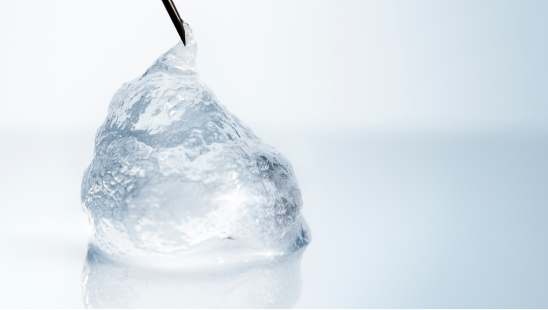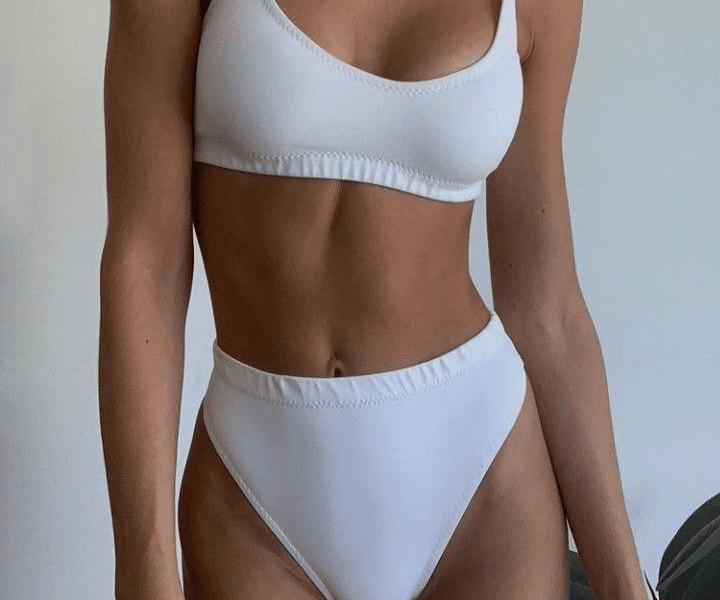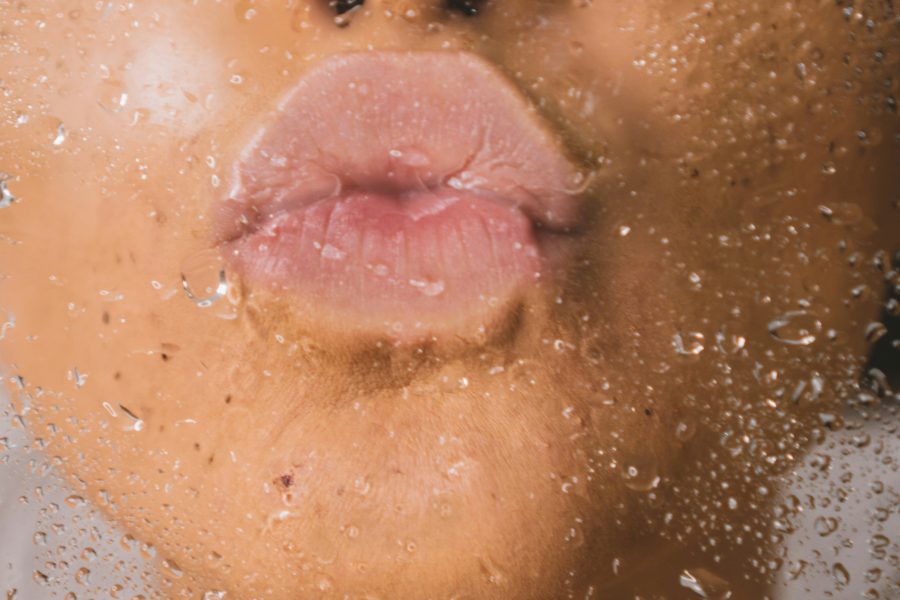You’ve just left your dermal filler appointment, buzzing with excitement about your fresh, youthful appearance. But the journey doesn’t end there. In fact, what you do in the days and weeks following your treatment is just as vital as the procedure itself. Proper aftercare is key to ensuring that your results last and look their best. Neglecting this stage can lead to issues like swelling, bruising, or uneven results, which can diminish the impact of your investment.
Many people overlook the importance of post-treatment care, focusing only on the procedure itself. This can lead to disappointment when the results don’t meet expectations. However, a little attention to aftercare can make a significant difference. The right steps not only help manage common side effects but also enhance the way your fillers settle into your skin.
In this blog post, we will provide you with an essential checklist for post-dermal filler care. From immediate aftercare tips to long-term strategies, we’ll cover everything you need to know to keep your skin glowing and your results lasting. Get ready to discover how to nurture your skin and ensure that your fillers deliver the stunning results you envisioned!
- Hyaluronic acid (HA) Dermal Fillers
- How Long Do Dermal Fillers Last?
- Considerations Before your appoinment
- Immediate Aftercare: The First 24-48 Hours
- Essential Tips for the First 48 Hours
- Ways to Minimize Bruising After Dermal Fillers
- Recognizing and Handling Potential Complications
- Maximizing the Lifespan of Your Fillers
- Long-Term Care for Lasting Results
- Enhancing Results with Lifestyle Choices
- When to Schedule Your Next Treatment
- Conclusion: The Key to Lasting Results
Hyaluronic acid (HA) Dermal Fillers
Dermal fillers are injectable treatments designed to restore lost volume, enhance facial contours, and smooth out wrinkles. Many types of fillers exist, each serving different purposes. The most common and widely used are hyaluronic acid (HA) fillers, which we will focus on here. Hyaluronic acid is a natural substance found in the skin. It retains moisture and gives the face a plump, hydrated look. HA-based fillers are popular because they offer long-lasting effects. However, they are not permanent; the body gradually breaks them down over time. Patients can also dissolve the filler if needed. This flexibility allows individuals to adjust their appearance as their facial structure or aesthetic preferences change. Therefore, HA fillers are ideal for those seeking natural-looking, yet temporary, enhancements.
In Canada, popular HA fillers include Restylane®, Juvederm®, Belotero®, Revanesse®, and RHA®. Each filler has a unique formulation tailored for specific areas of the face.

How Long Do Dermal Fillers Last?
Hyaluronic acid-based dermal fillers typically last between 6 to 18 months. The duration depends on several factors, including the type of filler used, the area treated, and lifestyle habits. For example, fillers in the cheeks generally last longer than those in more dynamic areas like the lips, where constant movement speeds up the breakdown of the filler.
It’s essential to understand that while HA fillers can last for several months, their longevity is influenced by individual factors such as metabolism and aftercare. Smokers or those frequently exposed to the sun may notice their fillers break down more quickly. Although results can last several months, there is no universal timeline. Some patients may need touch-ups sooner than others, depending on their body’s response to the filler and their lifestyle habits.
By considering these factors and consulting with your nurse injector, you can achieve long-lasting results that align with your evolving aesthetic goals.
Considerations Before your appoinment
Long-lasting results from dermal fillers begin with proper care even before your treatment. Taking the right precautions can reduce potential side effects and ensure the best results. Your preparation significantly impacts both your comfort and the longevity of the treatment’s effects. Here are some key considerations:
Cold Sore Prevention: If you have a history of cold sores, talk to your provider before getting lip fillers or treatments around your mouth. Taking an antiviral medication like Valtrex beforehand can help prevent an outbreak triggered by the injections. This step is essential to avoid post-treatment discomfort and complications.
Stop Smoking: Smoking delays healing and increases the chances of bruising and infection. Avoid smoking in the days leading up to your procedure to reduce these risks and help your skin heal efficiently.
Hydrate: Staying well-hydrated is one of the simplest yet most effective ways to help your skin recover faster. Hydrated skin responds better to treatment and shows more refined results.
Avoid Certain Medications: In the days before your treatment, refrain from taking aspirin, ibuprofen, vitamin E, and blood-thinning supplements like St. John’s Wort. These can increase your risk of bruising and prolong recovery time. Always consult your healthcare provider before stopping any prescribed medications, especially blood thinners, to ensure you maintain your overall health.
Planning Events: Patients with deeper wrinkles, such as marionette lines or nasolabial folds, are more likely to bruise. This is particularly true for older individuals. If you plan to have treatment before an important event, schedule it well in advance. This allows time for any swelling or bruising to subside. Always take necessary precautions and consult your healthcare provider to ensure a safe and smooth experience with your filler treatment.
Planning Events: Patients with deeper wrinkles, like marionette lines or nasolabial folds, are more likely to experience bruising. This is especially true for older individuals. If you plan to have treatment before an important event, schedule it well in advance. This gives time for any swelling or bruising to subside. Always take necessary precautions. Consult with your healthcare provider to ensure a safe and smooth experience with your filler treatment.

Immediate Aftercare: The First 24-48 Hours
You’ve just had your dermal filler treatment—what’s next? Caring for your skin in the first few days after treatment is essential. This care ensures a smooth recovery and long-lasting results. It’s normal to experience some swelling, bruising, and tenderness during this time. These reactions are your body’s natural responses to the injections and are part of the healing process. Typically, swelling peaks within the first two days and then gradually subsides as your skin settles.
Managing Common Side Effects
Swelling, bruising, and mild discomfort are expected after a filler treatment. While these reactions may be inconvenient, they are normal and temporary. Swelling will likely reach its peak within 48 hours. As your body adapts to the injections, these symptoms will fade over the next several days.
Cooling Measures
Using a cold compress is one of the most effective ways to reduce swelling and soothe discomfort. Gently apply an ice pack wrapped in a clean cloth to the treated area in short intervals. This helps control inflammation, reduces bruising, and soothes the skin. Aim to apply the compress for 10-15 minutes at a time, with 20-30 second intervals between applications. Be careful not to place ice directly on the skin, as this can cause frostbite.
If discomfort persists, over-the-counter pain relief like acetaminophen can help. However, avoid medications such as aspirin or ibuprofen, as they may increase the risk of bruising.
What to Avoid
To ensure your filler settles properly and to avoid complications, steer clear of certain activities for the first 24-48 hours post-treatment. Here’s what to avoid:
- Strenuous exercise: Activities that significantly raise your heart rate, like heavy workouts, can increase blood flow, worsen swelling, and lead to additional bruising.
- Heat exposure: Avoid hot showers, saunas, or any activity that induces sweating. Heat can escalate inflammation and disrupt the healing process.
- Makeup and oil-based products: Do not apply makeup or use products that may clog pores or irritate the injection sites for at least 24 hours. Let your skin breathe during this crucial recovery window.
- Alcohol and smoking: Alcohol increases the likelihood of swelling and bruising. Smoking—or using a straw if you’ve had lip fillers—puts unnecessary pressure on the treated areas. It’s best to avoid both for 24-48 hours after your treatment.
By following these aftercare tips in the first 24-48 hours, you give your skin the best chance to heal while minimizing side effects. Proper care now sets the stage for optimal, long-lasting results.
Essential Tips for the First 48 Hours
Gentle Skin Care
Your post-treatment skincare routine should be gentle and free of harsh irritants. Use a mild cleanser and avoid rubbing or massaging the treated areas, as this could cause the filler to move. Keeping your skin clean and irritation-free will support a quicker recovery and better results.
Hydration is Key
Hydration plays a crucial role in your skin’s recovery after dermal filler treatments. Drinking plenty of water helps your body heal faster and maintains the smooth, plump appearance fillers are designed to enhance. Aim to drink at least 6 to 8 glasses of water a day during your recovery to keep your skin hydrated and promote a smoother healing process.
Proper Sleep Positioning
How you sleep in the first 48 hours can significantly impact your fillers’ outcome. Keep your head elevated on a couple of pillows to minimize swelling and encourage the filler to settle evenly. Ideally, sleep on your back to avoid putting pressure on your face, which can distort the filler. Elevating your head helps fluids drain away from your face, reducing puffiness and contributing to more natural results. If you’re a side sleeper, consider using extra pillows to support your body and prevent rolling over at night.
Avoid Touching Your Face
It may be tempting to touch your newly treated areas, but avoid doing so for the first 48 hours. Do not apply pressure, massage, or rub the treated areas. These actions can interfere with the filler’s placement and increase the risk of infection. Your provider might instruct you to gently massage specific areas based on your treatment. Otherwise, let the filler settle naturally without interference. Trust the process and allow your body to adjust to the treatment on its terms.
Ways to Minimize Bruising After Dermal Fillers
Bruising is a common side effect of dermal fillers. However, you can take several steps to minimize its severity and support quicker recovery:
Topical Treatments
Applying soothing creams, such as Bepanthen, can help calm the skin and reduce irritation. These creams are designed to accelerate skin healing, making them a useful addition to your post-filler care routine.
Arnica Montana
This homeopathic remedy comes in both topical creams and tablet form. It is well-regarded for its anti-inflammatory properties. Arnica may help reduce bruising and swelling, speeding up your skin’s natural healing process after filler treatments.
Vitamin K Oxide Supplements
Vitamin K is known to strengthen blood vessels, which can help reduce the severity of bruises. By supporting vascular health, Vitamin K oxide supplements can assist in the healing process and make bruises less noticeable after treatment.
Pulsed Dye Laser Treatments
For particularly visible bruising, pulsed dye laser treatments can target discoloration directly. These treatments work by breaking down the pigmentation in bruises, helping to accelerate healing and reduce their appearance more quickly.
Makeup
While it’s essential to avoid makeup during the first 24 hours to allow your skin to recover, a clean, non-comedogenic concealer can help camouflage any remaining bruising once your skin has had time to heal. Be gentle when applying and choose products that won’t clog pores or irritate the treated areas.
Recognizing and Handling Potential Complications
Mild swelling and bruising are typical after dermal fillers. However, it’s important to stay alert for signs of complications. If you experience prolonged swelling, increasing pain, or unusual symptoms like skin discoloration, consult your provider. They can evaluate your symptoms and determine if you need additional treatment for a smooth recovery.
While dermal fillers are generally safe, knowing the difference between common side effects and serious symptoms helps you get prompt care if something doesn’t feel right. Here are some uncommon but significant complications to watch for:
Vascular Occlusion
Vascular occlusion is a serious risk of dermal fillers. It happens when a filler accidentally blocks a blood vessel. This can reduce or stop blood flow, leading to tissue damage if not treated quickly. Warning signs include:
- Skin discoloration: Look for a white, mottled, or “fishnet stocking” appearance in the treated area.
- Unusual texture: The skin may feel uneven or look abnormal.
- Throbbing pain: Severe, disproportionate pain could indicate a problem beyond normal post-treatment discomfort.
- Visual disturbances: Although rare, any vision issues should be treated immediately, as they may signal a serious vascular complication.
- Blisters or ulcers: Small sores or blisters near the injection site are a red flag.
If you notice any of these symptoms, contact your provider immediately. Vascular occlusion requires urgent treatment to avoid serious complications like necrosis (tissue death) or, in rare cases, vision impairment.
Infections
Infections are another rare but possible complication of dermal fillers. They usually occur when bacteria enter the injection site. Signs of an infection include:
- Persistent swelling: Swelling that doesn’t improve after a week could signal an infection.
- Redness and warmth: If the treated area becomes warm or red, this could indicate infection.
- Ongoing pain: Pain beyond the typical 7-day recovery window, especially if it’s accompanied by unevenness or asymmetry, warrants a call to your provider.
Don’t dismiss these symptoms as normal healing. Infections require early intervention to prevent serious outcomes. Always consult your provider if you’re unsure about what you’re experiencing.
more reasons to Contact Your Provider
In addition to vascular occlusion and infections, other signs may require professional attention:
- Swelling lasting longer than seven days: While initial swelling is normal, if it persists beyond a week, this could indicate an allergic reaction or infection.
- Nodules or bumps: Lumps or uneven areas around the injection site may result from filler misplacement.
- Blanching or whitening of the skin: This could indicate poor blood flow, a sign of vascular occlusion.
Remember, it takes about 3-4 weeks for dermal fillers to fully integrate into your tissue. Some swelling or asymmetry is normal during this period. Avoid seeking additional treatments until your skin has fully healed. However, if you experience any of the symptoms outlined above or have concerns, don’t hesitate to contact your provider for guidance.
Maximizing the Lifespan of Your Fillers
After your initial recovery, you can maintain your dermal filler results with thoughtful adjustments and consistent care. A few simple tweaks to your skincare routine and lifestyle can significantly extend the life of your treatment. This approach makes your investment truly worthwhile.
Sun Protection: A Must for Filler Longevity
Protecting your skin from the sun is crucial for preserving your dermal fillers. Ultraviolet (UV) rays can speed up the breakdown of hyaluronic acid-based fillers. This can cause your results to diminish more quickly than expected. Make sunscreen a daily essential, even on cloudy or cool days. A broad-spectrum sunscreen with at least SPF 30 is ideal. It protects against both UVA and UVB rays. This not only safeguards your fillers but also keeps your skin healthier and more youthful over time.
Skincare Ingredients to Use: Boosting Skin Health
The right skincare products can enhance the longevity of your fillers and keep your skin vibrant. Look for ingredients that promote overall skin health and complement your treatment. Consider adding:
- Vitamin C: This powerhouse ingredient brightens the skin and stimulates collagen production. It helps maintain the firmness and glow you desire after fillers.
- Retinol: After waiting a few days post-treatment, reintroducing retinol can boost cell turnover. This helps your skin stay smooth and radiant.
- Antioxidants: Ingredients like Vitamin E protect against environmental stressors that can degrade fillers over time.
Using a skincare regimen rich in these active ingredients can maintain the appearance of your fillers while keeping your skin in top condition.
Healthy Lifestyle Choices: Preserving Your Results
Your lifestyle choices directly impact how long your fillers last. Smoking, excessive alcohol consumption, and prolonged sun exposure can speed up the degradation of fillers and negatively affect your skin. To make the most of your treatment:
- Avoid smoking: Smoking constricts blood vessels and can speed up the breakdown of fillers, reducing their effectiveness.
- Limit alcohol: While occasional drinking won’t drastically affect your results, frequent consumption can lead to dehydration and swelling. Both can compromise the longevity of your fillers.
- Stay hydrated: Drinking plenty of water keeps your skin hydrated. This aids in the filler’s integration and ensures smoother, more natural results.
To extend the desire effects of your dermal filler treatment, you can take several strategic steps beyond your initial aftercare and regular check-ups.
Long-Term Care for Lasting Results
By focusing on follow-up care, skincare, and healthy lifestyle habits, you can ensure that your dermal fillers deliver long-lasting results. This will keep your skin looking refreshed and rejuvenated for an extended period.
Combine Fillers with Botox
For areas with significant facial movement, such as around the mouth or forehead, combining dermal fillers with Botox can yield better results. Botox relaxes the muscles that create dynamic wrinkles. This reduces movement in those areas and enhances the effect of the fillers. Additionally, it slows down the breakdown of the fillers. The combination creates a smoother appearance and helps you maintain a youthful look for a longer time.
Consistency in Skincare
A well-maintained skincare routine supports the longevity of your fillers. Incorporate products that boost collagen production—such as those containing retinol, Vitamin C, and peptides. These ingredients help your skin stay firm and youthful. They complement the effects of your fillers, promoting a naturally rejuvenated look while extending your treatment results. By consistently using these products, you can enhance both the appearance of your skin and the durability of your fillers.
Enhancing Results with Lifestyle Choices
Your lifestyle plays a critical role in maximizing the lifespan of your dermal fillers. With a few adjustments, you can help ensure that your treatment lasts longer.
Stress Management
Chronic stress negatively affects skin health and leads to faster filler breakdown. Incorporate stress management techniques like meditation, mindfulness, and regular exercise. These practices help maintain your skin’s health and slow down the degradation of fillers. By managing stress, you can keep your skin looking its best and preserve the longevity of your treatment.
Healthy Sleep Habits
Quality sleep is essential for skin recovery and overall health. Aim for 7-9 hours of uninterrupted rest each night. For the first few days post-treatment, sleep with your head elevated to reduce swelling. Good sleep habits promote skin rejuvenation and help maintain the effects of your dermal fillers.
You don’t need drastic lifestyle changes to maintain the long-term effects of your fillers. Being mindful of certain factors can help ensure your treatment delivers the desired results. By following these simple practices, you can minimize the chances of early metabolism of your fillers and enjoy your enhanced appearance for as long as possible.
When to Schedule Your Next Treatment
To achieve your best results, schedule a follow-up treatment around 6-8 weeks after your initial session. These appointments allow your practitioner to assess your progress, make adjustments, and address any concerns. They’re also an opportunity to explore additional treatments that could enhance your look further, ensuring you reach your desired outcome.
This follow-up allows your provider to fine-tune your look, especially if more volume or contouring is needed. Everyone’s skin and aesthetic goals are unique, so the timeline for follow-up treatments will vary. Your practitioner will provide tailored recommendations based on your individual needs, ensuring that your treatment plan aligns with your desired outcome.
Regular follow-up appointments every 8 to 12 months are crucial for maintaining long-lasting results. These visits ensure your fillers hold up well, address new concerns, and plan for any necessary touch-ups. Staying proactive with your care helps you keep a balanced and refreshed appearance over time.
Conclusion: The Key to Lasting Results
Caring for your skin after dermal filler treatment is essential for maintaining your results. From immediate aftercare to long-term lifestyle adjustments, each step contributes to prolonging the effects of your fillers. By following your provider’s guidance, attending follow-up appointments, and adopting the recommended care routines, you’ll maximize the longevity of your treatment and address any concerns early on.
Every individual’s skin and aesthetic goals are different. Personalized advice is key. Always consult with your cosmetic injector for guidance throughout each stage of your treatment journey. With their expertise, you can enjoy beautiful, natural-looking results for as long as possible, making the most of your dermal filler experience.




Leave a Reply